Last updated on February 4th, 2021 at 05:52 pm
Abbreviations, Knitting Tips and Wool Substitutions from the Lux Knitting Book
Editor’s Note:
The following knitting tips are excerpted from the Lux Knitting Book, published by Lever Brothers in Toronto, 1938.
You’ll find sound, basic knitting advice here, along with abbreviations used in the many beautiful knitting patterns from the book.
ABBREVIATIONS
K. — knit plain
P. — purl
W.O. — wool over the needle (see various ways of doing this, given in “Knitting Tips”)
tog. — together
M. 1 — make one stitch (given sometimes as “increase one”)
St. — stitch
S. 1 — slip one stitch
P.S.S.O. — pass slipped stitch over
dec. — decrease
inc. — increase
To Work “Even” — is to work the row without increasing or decreasing.
The Asterick (*) indicates that the directions immediately following are to be repeated a given number of times. Thus “Repeat from * twice” means that the pattern following the asterick immediately preceding is worked 3 times in all.
KNITTING TIPS
Buy sufficient wool for the article to be knitted, at the time of original purchase, making sure all wool is of one “dye lot” number. Different “dye lots” of the same colour may vary slightly. Should you have to purchase a second lot of wool of a different “dye lot”, begin using it for a complete part of the garment (such as a sleeve or back).
All knitting needles called for in this book are English gauge.
To check the tension — (Tension is the number of stitches required, when following a given pattern, to work one inch; in this book the number of rows which will make one inch when worked, is also given.) Using wool called for in the pattern or a substitute that will work to the same tension (see “Wool Substitutions”), case on 20 stitches if in a plain stitch or the required multiple if in a pattern, using the size of needles indicated in the directions. Work 2 inches. Check the tension by placing the sample flat on a table, measuring one inch with a ruler and counting the number of stitches or rows to that inch. If tension is too tight, try again with a size larger needle and if too loose, with a size smaller needle.
Substitution — If you substitute another wool for the one specified in the pattern, be sure it will work to give the same tension as given in the instructions.
To take measurements — Measure bust and natural waist line; measure hips, 7 inches below the natural waist line; for the side seams measure from beginning of blouse to the first cast-off stitches of armhole; for the skirt, measure from natural waist line to desired hem line at centre front.
To change size of pattern — If garment is knitted in a plain stitch, to increase one size (for example from 34 to 36) add stitches required to make front and back each one inch wider. To increase two sizes (34 to 38) add stitches required to make front and back each two inches wider. In working armhole, neck and shoulders, take care to distribute these stitches suitably. To decrease size, reduce the number of stitches in both front and back, following the same rules.
If the garment is knitted in a pattern, it will be necessary to increase or decrease by complete patterns. In this book multiples are given when required. When such a change is made, it will be necessary to adjust pattern when shaping armholes, neck and shoulders.
To adjust armhole size, lengthen or shorten the distance from cast-off armhole stitches to shoulder.
To “M. 1” in next stitch — On a “knit row” knit into the front and then into the back of the next stitch before slipping the worked stitch from the left-hand needle. On a “purl row” purl into the back and then into the front of the next stitch before sipping it off the left-hand needle.
To “M. 1” before the next stitch —Pick up the thread preceding the next stitch with the right-hand needle, slip it on the left-hand needle and knit plain into the back of the this thread.
Wool over the needle — In a knit row the wool is carried under and over the right-hand needle. In a purl row, the wool is carried over and under the right-hand needle.
In a rib; changing from a knit stitch to a purl stitch, the wool is brought forward ready to purl and then carried over and around the right-hand needle, changing from a purl stitch to a knit stitch, the wool is carried over the right-hand needle.
Decrease by casting off —After this decrease, the stitch remaining on the right-hand needle is included in the count of the stitches for the next step. For example, if the instructions read “Cast off 4 sts., K. 4”, do the casting off, then, counting the stitch on the right-hand needle as your first stitch, actually knit only 3 more stitches to give the total 4 required.
To graft — Place all the stitches on two needles, an equal number on each. Working on the right side, break off the wool (which should be at the right-hand end of work) leaving an end of a suitable length. Thread this end into aa darning or wool needle. * Insert the darning needle as if to knit into the first stitch on the front needle; draw it through and slip this stitch off the needle. Insert the darning needle as if to purl, into the next stitch on the front needle; draw the wool through and leave this stitch on the needle and insert the darning needle as if to purl, into the first stitch of the back needle; draw it through and slip this stitch off the needle. Insert the darning needle as if to knit, into the next stitch of the back needle and leave the stitch on the needle.. Carry the wool forward under the needle and repeat from * until all stitches are worked off. Fasten thread securely.
To join wool — When working on two needles join wool at the end of the row. On a circular needle, separate for about 6 inches the strands of the end of the old ball and the beginning of the new ball; remove half the number of strands; place the remaining strands of wool side by side; ends in opposite directions – then, leaving generous ends to be darned in later, work 33 or 4 stitches of the overlapped thinned wool; continue with the new wool.
Crocheted casing for skirt top — Join wool. With the wrong side of the work facing you, chain 5, * miss 1 slip stitch in the next stitch at the left in the 5 row below; chain 5, make 1 slip stitch at the skirt top in the 3rd stitch to the left of the first stich, chain 5. Repeat from * around the skirt top. End with a slip stitch in the first stitch. Turn right side of work towards you and work 1 sinle crochet in each stitch at the skirt top. Finish with a slip stitch. Break the wool, draw it through the loop and darn in the end.
Crocheted beading for the skirt top — Join wool. With the right side of the work facing you, chain 6, * skip 3 stitches, make 1 treble crochet (wool twice around the hook) in the next stitch, chain 3. Repeat from * for round. Work 1 slip crochet in 3rd chain of the “chain 6” in the first round. Work 1 single crochet in each stitch of the previous round.
To make a cord — Measure strands of wool 3 times as long as the finished cord is to be, the number of strands ranging from 3 for a fine cord to 25 for a heavy girdle cord. Fasten one end securely and twist from the other end, holding strands taut all the time, until firmly twisted. Still holding wool taut, bring the 2 ends together and from the doubled end, release a few inches at a time; the cord will twist itself. Finish each end with a knot or tassel.
To make a pom-pom — Cut a piece of cardboard to width required (usually 1/2 to 1 inch). Wind with wool approximately 130 times if 4-ply wool, 200 or more times if a finer wool. Using a darning needle, slip a piece of wool, doubled, between the card and wound wool, tie securely. Cut through wool half-way around from tying threads and trim off any long ends.
To make fringe — Cut lengths of wool – an easy way to do this is to cut a piece of cardboard required width and wind the wool around it, then cut through the strands of wool at one edge of the cardboard. * Insert a crochet hook in the edge of the article where the fringe is to be, fold the required number of pieces of wool in half and draw them through the edge of the article with the hook. Repeat from * until fringe is complete, spacing each group of strands according tot he fringe reuquired. Trim ends.
Other Tips
The first stitch of garter-stitch should always be slipped from the left-hand needle to the right-hand needle. In all other stitches, work the first stitch.
When picking up stitches on an edge (as for border) use a finer needle to pick up and knit with, and change ot a regular needle in second row. If the edge stitches prove too loose, pick up the stitches next to the edge.
Contrasting colour in ribbing is worked in by always working the first row of the new colour in knit stitch.
Always clean needles before beginning to work to avoid a possible dark streak.
A stitch holder may be replaced by a large safety pin, a spare needle or a piece of thread.
Fold knitted garments when not in use and lay them flat; never hang up as they tend to stretch out of shape.
WOOL SUBSTITUTIONS
In substituting a wool for the one given in the pattern, be sure to choose one that will give a desirable texture to your finished fabric. Check your tension particularly carefully. If thee is any variation, change to needles that will give the required number of stitches to the inch.
The following five categories give substitutions that apply to patterns in this book:
- 2-ply fingering wools, angorine, some angoras, Sea Hawk, Claudia.
- 3-ply fingering wools, 4-ply andalusian, Bramble.
- 4-ply fingering wools, crochet-knitting, Wool String, Wool Crepe, Boucle de Laine, Novalaine.
- Leonora, Sylvan Crepe, Opaleen.
- Some 6 and 8-ply fingering wools, 8-ply Trocken, Totem, Jumbo.
TO BLOCK
At last – the end’s in sight. Now your hours of “knit one, purl one” are over! Visualize yourself as smartly turned-out as a Paris model! To achieve that objective, the finishing of any knitted apparel is of vital importance. A great deal depends on expert blocking. It isn’t necessary to send your work out for this – do it yourself in this easy way.
Always block the individual pieces of your garment before sewing them together.
Pin each piece – to measurements – right side down on an ironing blanket. (Be sure that your pins are rust-proff and that you put them close together.)
Spread a damp Turkish towel over the pinned-out pieces and leave overnight. Remove the towel and allow the pieces to dry out completely.
Remove the pins and sew up the seams.
When the garment is sewn up, cover the right side of the seams with a wet cloth and pat them gently with a hot iron – and presto, you’re all ready to start on your next costume.
Garments of boucle are, however, an exception and should be placed wrong side up when finishing seams to avoid possible iron marks.
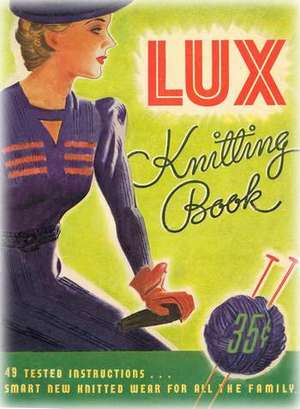
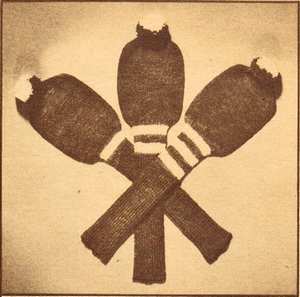

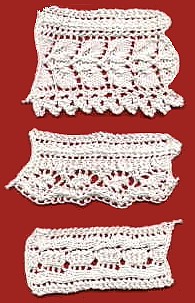
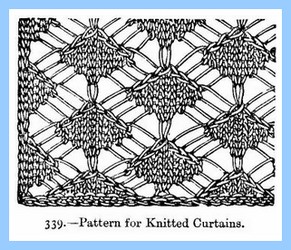

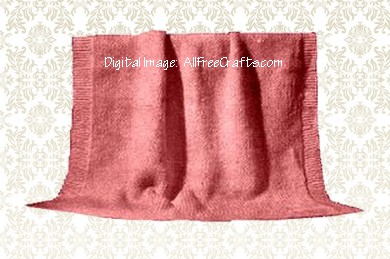
Leave a Reply